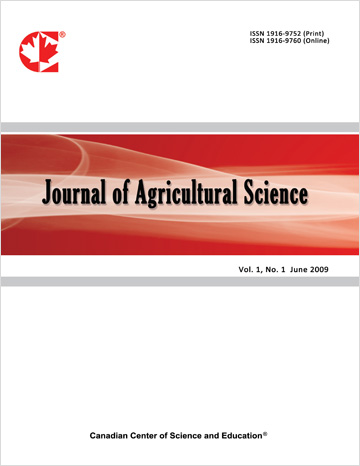Pomegranate Micropropagation, Callogenesis and Genetic Integrity Assessment Using Simple Sequence Repeat Markers
- Tebogo Stimela
- Remmy W. Kasili
- Edward G. Mamati
Abstract
In recent years, the awareness of pomegranate health benefits has grown exponentially; nonetheless the existing propagation methods remain a challenge to supply adequate suitable planting materials needed for commercial production. Micropropagation can lead to mass production of plantlets and callus-mediated in vitro regeneration can open avenues for the use of genetic engineering to improve this crop. The aim of this study was to evaluate appropriate conditions for pomegranate micropropagation, callogenesis and use Simple Sequence Repeat markers to screen for somaclonal variation. Cytokinins (Benzylaminopurine, Kinetin and Thiadiazol-5ylurea) were tested for shoot induction from nodal explants while auxins (1-Naphthaleneacetic acid, Indole-3-butyric acid and Indole-3-acetic acid) were tested for root induction of in vitro regenerated shoots. 1-Naphthaleneacetic acid combined with Benzylaminopurine was assessed for their ability to induce callus from cotyledon and leaf explants. Genetic integrity between mother plant, callus and in vitro regenerated shoots were assessed using eight Simple Sequence Repeat markers. Maximum number of shoots and leaves were obtained on full strength Murashige and Skoog media with 6.9 µM kinetin. The highest number of roots was achieved on half strength Murashige and Skoog media with 4.9 µM Indole-3-butyric acid and the longest root was got on half strength Murashige and Skoog media with 5.3 µM Indole-3-acetic acid. Leaves and cotyledons demonstrated to be potential explants for callus formation at all hormonal combination levels tested. Eight out of 13 amplified alleles were polymorphic. A wider genetic variation was found with similarity coefficient range of 0.46-0.92. More somaclonal variation was in regenerated shoots compared to callus.
- Full Text:
 PDF
PDF
- DOI:10.5539/jas.v11n1p237
Journal Metrics
- h-index: 67
- i10-index: 839
- WJCI (2023): 0.884
- WJCI Impact Factor (2023): 0.196
Index
- AGRICOLA
- AGRIS
- BASE (Bielefeld Academic Search Engine)
- Berkeley Library
- CAB Abstracts
- ChronosHub
- CiteSeerx
- CNKI Scholar
- Copyright Clearance Center
- CrossRef
- DESY Publication Database
- DTU Library
- e-Library
- EBSCOhost
- EconPapers
- Elektronische Zeitschriftenbibliothek (EZB)
- EuroPub Database
- Excellence in Research for Australia (ERA)
- Google Scholar
- Harvard Library
- IDEAS
- iDiscover
- Jisc Library Hub Discover
- JournalTOCs
- KindCongress
- LIVIVO (ZB MED)
- LOCKSS
- Max Planck Institutes
- Mendeley
- MIAR
- Mir@bel
- NLM Catalog PubMed
- Norwegian Centre for Research Data (NSD)
- Open J-Gate
- OUCI
- PKP Open Archives Harvester
- Polska Bibliografia Naukowa
- Qualis/CAPES
- RefSeek
- RePEc
- ROAD
- ScienceOpen
- Scilit
- SCiNiTO
- Semantic Scholar
- SHERPA/RoMEO
- Southwest-German Union Catalogue
- Standard Periodical Directory
- Stanford Libraries
- SUDOC
- Swisscovery
- Technische Informationsbibliothek (TIB)
- Trove
- UCR Library
- Ulrich's
- UniCat
- Universe Digital Library
- WorldCat
- WRLC Catalog
- Zeitschriften Daten Bank (ZDB)
Contact
- Anne BrownEditorial Assistant
- jas@ccsenet.org
